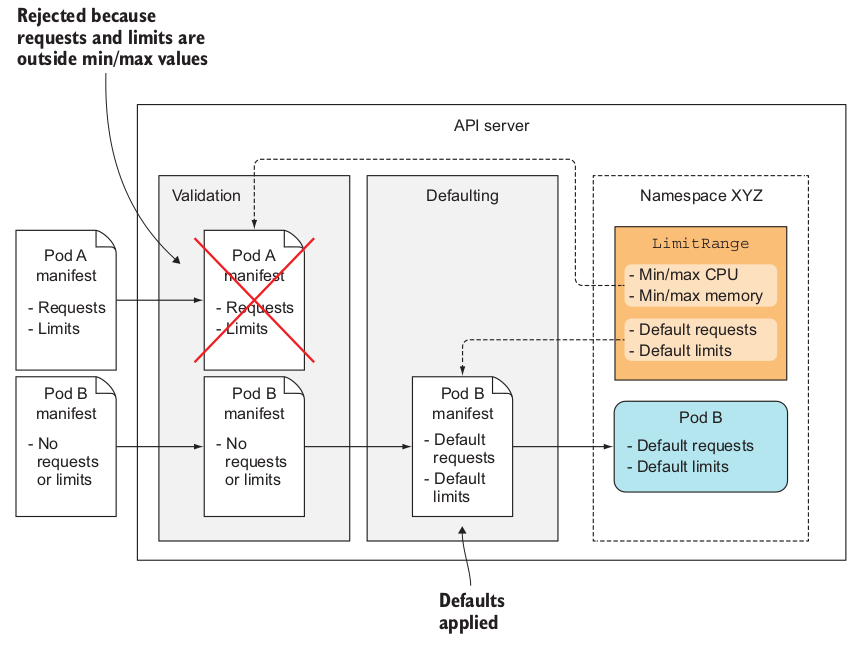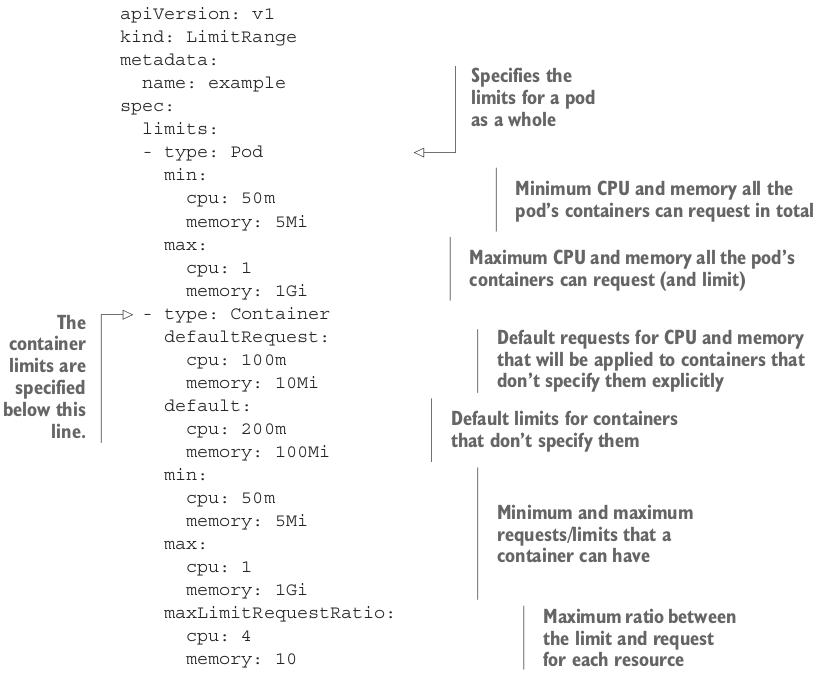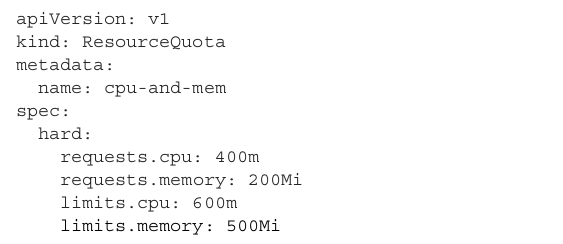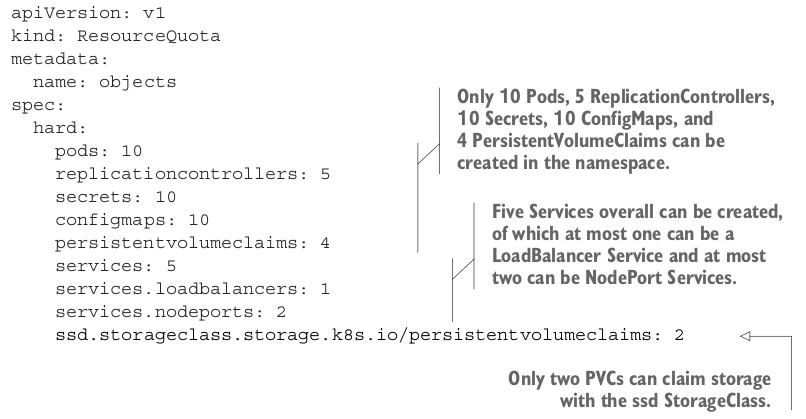Namespaces resources quotas
The Limits and Requests are set for each container, what about if we want to apply Limits to namespaces?
LimitRange Object
The LimitRange resource. It allows you to specify (for each namespace) not only the minimum and maximum limit you can set on a container for each resource but also the default requests for containers that don’t specify requests.

LimitRange use case
A great use case for LimitRange is to prevent users from creating pods that are bigger than the node’s resources in the cluster. Without LimitRange the API Server will accept the pod but never schedule it.

Limiting total resources in a namespace
LimitRange only apply to individual pods, we can limit total resources by namespace with the object ResourceQuota.

ResourceQuota sets the maximum amount of CPU pods in the namespace can request to 400 millicores. The maximum total CPU limits in the namespace are set to 600 millicores. For memory, the maximum total requests are set to 200 MiB, whereas the limits are set to 500 MiB.

Creating LimitRange along with ResourceQuota
As a best practice, you should create both objects. When a quota for a specific resource (CPU or memory) is configured (request or limit), pods need to have the request or limit (respectively) set for that same resource.
Limiting the number of objects that can be created
ResourceQuota can also be configured to limit objects in a namespaces

The ResourceQuota in this listing allows users to create at most 10 Pods in the namespace, regardless if they’re created manually or by a ReplicationController, ReplicaSet or DaemonSet.